Installation of sewage - features home improvement
Comfort in the home is impossible without organizing the supply of hot and cold water, drainage and stable temperature at any time of the year. Installation of sewage and water supply is a very important task, however, any attentive owner can handle it.
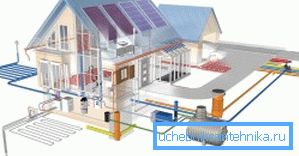
List of regulatory documents
It is possible to name more than 10 standards in which, one way or another, sewage systems or organization of water supply are mentioned.
But if you plan to do all the work without the help of specialists, then you need to pay attention to the following documents:
- SNiP 2.04.01-85 * - contains information about sewage, hot and cold water supply. It can be considered a “reference book” in the design, the standard contains not the rules for installing sewers, but the general requirements for the system;
- SNiP 3.05.01-85 - it also contains information useful in the design and installation of plumbing and heating in the apartment. The requirements of the location of convectors in the house, the required slopes of pipelines on the approach to heating appliances, etc. are given.
- SNiP 41-01-2003 - useful only when designing heating, ventilation in the apartment. Information will be more useful at the design stage of the heating circuit;
As for the general requirements for sewage systems, water supply and heating, they can be formulated as follows:
- tightness of the joints;
- minimum number of turns of the pipeline;
- the slope of the pipelines (sewage) should be selected in accordance with the diameter;
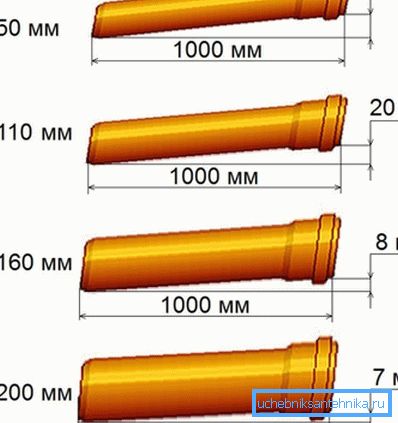
- the selection of pipes must take into account the nature of the flow of fluid, because water is supplied under pressure;
- in the case of heating and hot water supply, it is necessary to take into account the prolonged exposure to high temperatures.
What material to choose
The durability and frequency of maintenance of the drainage system or water supply depend, among other things, on how correctly the pipeline material was selected.
Sewer pipes
Installation of sewage systems is greatly facilitated when using plastic pipes (PVC or polypropylene). Polypropylene pipes are less often used for the organization of drainage, mainly due to the fact that they are more plastic.
Sewerage works in free-flow mode, so you only need to determine the diameter at different sites. Plastic sewer pipes differ in addition to the diameter of the wall thickness. If the load is small (the load on the domestic sewage pipeline is almost zero), then you can stop at a wall thickness of 3.2 mm.
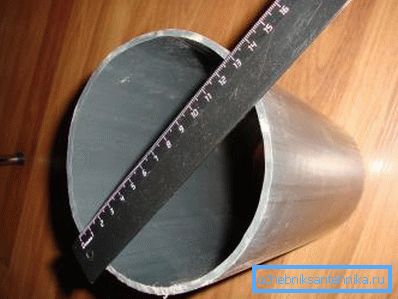
But for outdoor plumbing it all depends on the depth of the pipeline. If it is laid in a protective box, then the thickness can also be taken as minimal. Otherwise, it is better to choose pipes with a thicker wall, although their cost is somewhat higher. The basic rules for installing plastic sewage systems are given below.
Pipes for water supply and heating
The most stringent requirements are put forward to the heating and hot water system. After all, the pipe material must ensure tightness with prolonged exposure to high temperature (the temperature of the coolant reaches 95? C) and pressure.
Note! The polypropylene pipeline is characterized by high plasticity compared to PVC sewer pipes. Therefore, rigid fixation is prohibited, otherwise the pipeline may become deformed when hot water is supplied.
And here the polypropylene pipeline has an advantage. It is pipes from this material that are used to supply water (cold and hot), as well as supply coolant to the radiator.
It is possible to determine whether the pipeline is suitable for the installation of a water supply system by hand.
Depending on the marking of the pipes can be applied:
- for cold water - PN Number means the maximum working pressure (in this case - 1 MPa or 10.2 kg / cm2). Water temperature should not exceed 20? С;
- for supplying both cold and hot water - PN The maximum water temperature should not exceed 60? С. Used rarely, the price is slightly higher than the PN10;
- for hot and cold water supply - PN20 (pressure up to 20.1 kg / cm2), the upper limit of the temperature of the liquid is 80? Of course, no one bothers to use such pipes for the supply of cold water;
- to supply coolant to radiators, such pipes are reinforced with aluminum foil. Allowable pressure - 25.49 kg / cm2, and the water temperature can reach 95? С.
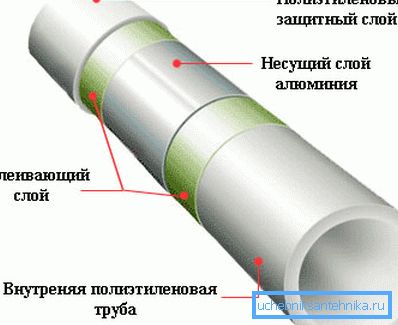
Mounting technology
Design of water supply, sewage and heating systems are interrelated issues, so it is advisable to finish with the project before starting work. This will allow laying the pipeline along the optimal “route” and avoiding undesirable intersections. Installation of water supply systems for sewage heating begins only after a plan has been worked out.
The best can be called design in specialized programs. The pipeline for supplying hot and cold water is painted in blue and red, respectively, it is convenient to optimize the route.

Manually plan more conveniently on graph paper.
The planning instructions are as follows:
- first, the scale shows the layout of the floor (house);
- it marks the position of plumbing fixtures and radiators;
- after that, on the plan, plumbing devices need to be connected by pipeline to a riser (to discharge the effluent);
- also they need to bring cold and hot water.

Such a plan will allow you to accurately calculate the required number of pipes and fittings.
Sewage installation procedure
The sewage system is divided into 2 subsystems - internal and external (applies only to private houses).
In general, the installation of plastic sewage is performed in the following sequence:
- in the case of an autonomous sewer, a septic tank is first installed;
- then, from the septic tank, the pipes are laid in a trench to the foundation of the house; it is desirable to install inspection wells at the site of the pipeline turning;
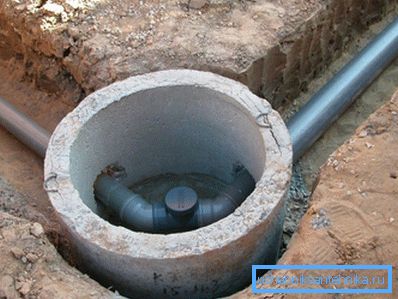
- after that, the installation of the internal pipeline begins;
- in concrete walls and ceilings, holes are prepared in advance, and installation of the sewage system inside begins with the installation of the riser and its connection to the outlet;
- after that, it remains only to perform floor wiring and connect sanitary equipment to the drainage system.
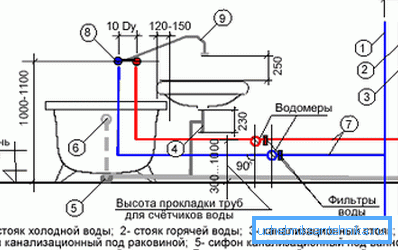
Installation of plumbing systems
As for the water source, it can be either a centralized water supply system, or any natural source, for example, a reservoir or a well. Of course, in the second case, the situation will be complicated by the fact that the water will have to be raised to the desired height and provide some reserve in case of a power outage.

When organizing a water supply system in a city apartment, everything is much simpler, it is enough to connect the necessary plumbing fixtures with a riser. Installation of water supply and sewage systems is not very different, the main subtleties of technology lie more in the correct connection of polypropylene pipes.
If metal and PVC pipes are most often connected by a bell-shaped method and sealed with a waterproof sealant, then in the case of polypropylene pipes this is not enough. To achieve the required tightness, welding technology is used, while the ends of the pipes under the action of high temperature soften and become one piece after the connection.
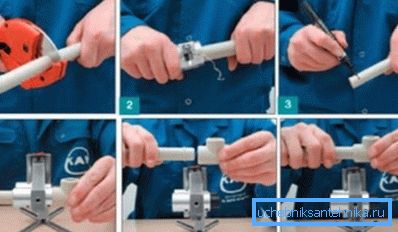
Note! When laying the outer part of the water supply, it is especially important to take into account the depth of frost penetration. It is better to spend time and additionally warm the pipe than to eliminate the gust in the winter.
Installation of heating system
Installation of heating water supply sewage - the key to a comfortable life in the house. But it is heating that plays a crucial role in the formation of a microclimate.
This element of home improvement can be considered the most difficult and time consuming, and difficulties may arise at the planning stage. It is necessary to determine the required power of the circuit, taking into account the type of coolant, its temperature, number of floors and the size of the room. Already on the basis of this calculation, the appropriate pump, expansion tank is selected.
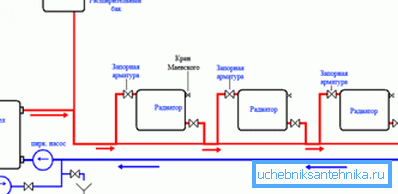
The pipeline must withstand a constant high enough pressure and temperature of the order of 90-95? C. If, for example, in the drainage system, it is enough just to connect the pipes together, then in the heating circuit you need to constantly monitor the pressure (which means you will need a pressure gauge), and be able to discharge excess water (expansion tank).
Another difference can be called the movement of the coolant. If the sewage system simply discharges into the septic tank, and the plumbing system delivers water to the consumer, in the heating system the coolant circulates around the circuit. That is, a hot liquid is supplied to the radiator and a cold liquid is discharged.
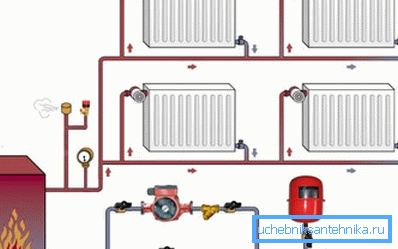
Summarizing
Installation of sewage, as well as water supply and heating - is vital in any home. These systems are designed and installed simultaneously, providing comfort in any weather. It is important that even a novice builder will be able to cope with this task.
The video in this article focuses on all the systems mentioned in the article.